The construction market offers a huge number of roofing materials, excellent in price, quality and method of laying. But recently, iron and plastic products prefer more natural and natural materials - tiled, wood, clay, reed. About the last and will be discussed in our article. Reeds for the manufacture of roofs were used long before the invention of modern ways to create roofing pie. Of course, work has its own specifics, but if desired, everyone can cope with her.
Product specifications
The roofs of the rooks are becoming increasingly more popular every year, this trend in Europe and the USA is especially noticeable. In Russia, this method of laying roofs is not so strong, and the reason for this can be a historical predisposition. The fact is that earlier reed roofs were the attribute of the poor, and the houses of noble rich people decorated the tile.
Despite the fact that the technology of creating roofs from the root can be considered the original Russian, in the West with this material learned how artifically learned that today, domestic masters adopt experience among foreigners. There are even special schools of styling reed roofs, but we will tell about it a little later.
Be that as it may, reed as roofing material, is experiencing the second birth, and the reasons for this set. More than 300 of his species are known, but only 5 of them can be used to arrange the roof. At the same time, it is suitable for the construction only that reed that grew on the shore of a fresh reservoir - plants with coasts of limanov and salt lakes does not have that strength, durability and insulating characteristics, that their freshwater fellows.
As practice shows, the highest quality reed, also known as an ordinary reed, grows in the Krasnodar Territory, Volga region and on the shores of lakes and swamps in the Astrakhan region.
Before making a roof from it, the reed is thoroughly sorted, impregnate with antiseptics that prevent rotting, and antipirens (do not allow the material to light up).
Interesting: It is known that each person has its own biofield, which extends to the distance from 1.5 to 3 m and more from the body. Scientists emphasized that the metal reduces it by a 30% biofield, a conventional burned brick - by 15%, and the wood does not affect. Straw and reeds, which passed chimrocessing, on the contrary, increase the biofield by 5%, and the "raw" raw grass - by all 15% and more. What does it give? The man in the house of sacred bricks or with the reed roof feels better, cheerful, happier, less often is sick and less tired.
The advantages of the roof from the roof
In addition, the cane roof improves well-being, it has more tangible advantages. So, the appearance of the house with such a roof will be very original and extravagant. The thick layer of the root does not pass water, perfectly retains heat and does not need additional protection (waterproofing and insulation). In winter, the room is very warm, and in the summer - cool.
Since the stalks of the root are quite flexible, it is possible to weave bizarre forms and create interesting architectural objects on the roof. Natural material provides natural ventilating room, and it does not need vaporizolation. After processing with antiseptics, reed becomes immune to mold and fungus. The durability of the reed roof is also pleased - it can serve without repair at least 50 years.
Today, reed roofs are often found on the baths, gazebos, in restaurants made in traditional style - in general, play a role more decorative than functional. And if in the West, residential buildings are built entirely from the reassembly in the West, then in Russia for this material for some reason they are not particularly trusting. And if you also attend doubts, then after reading this article, there will be no trace.
So, let's summarize and clarify why the reed is so good for the roof improvement:
- environmentally friendly material;
- beautiful insulation;
- provides reliable waterproofing;
- natural ventilation;
- good sound insulation (reed roof will never be noise from a hail or rain, unlike slate or metal tile);
- static electricity does not accumulate (lightning will never hit the reed roof);
- durability (minimum service life of 50 years);
- savings (about the cosmetic repair of such a roof you do not need to think at least half a century, it is not necessary to buy heat, steam and waterproofing to arrange roofing pie, the material and transportation is quite cheap).
Cantham roof disadvantages
There is a canthaw and a couple of shortcomings, otherwise it would be used without any concerns. The most important enemy of dry skes is a high temperature and open fire. Of course, they are treated with antipirens, but to reduce the risk of fire to a minimum, it is better to carry out processing in a few years. The fact is that the fire-fighting composition is covered by reed itself, and already bound roofing, and it penetrates the surface only by 5-7 cm. Over time, chemicals are arched with rains and cease to perform their protective function. Therefore, if you live in a climatic zone with a very hot and dry summer, it should be taken seriously to this issue.
The second enemy of the reed roof - birds. Hollow dry stems are ideal for reinforcing nests, so the feathers can ruin a flat surface. But this problem is quite solved - so that the bird cannot pull out the straw, it is necessary to put very tightly and high-quality without protruding ends.
As for rodents, they are not so much dry grass, how much cracks, and since when laying a reed roof, the gaps are not formed, the answer suggests itself. In a tightly laid pasture, it is simply nowhere to reserve the nest and grow offspring, so the mice will rather prefer thin bitumen plates than the cane turn 35 cm.
Preparation of Kamyshem
The good half of the success depends on the proper billet of the root. Usually they are engaged in the end of autumn or at the beginning of winter. At this time, all the processes of vital activity cease in the stems, the reed stops growing and "falling asleep." It acquires a characteristic bronze-golden color with a solid surface and cavity inside. A few months after laying under the influence of precipitation and ultraviolet, the reed roof will change the color to the grayish-brown, but it is completely normal and does not affect quality.
Refamies are making special technique or manually, after which they knit in the sheath, dried and tied up in a guard. When the moisture content of the stems will be 18%, they are collected into cone-shaped shops with tassels up and leave to dry in this position for several months.
Preparation of the roof for laying the roof is called Skird. Before laying it, it is processed in a special way - the bakers are cut off (with them the reed begins to rot), remove the leaves and other plants that accidentally fell into the sheath.
Roofing device
Despite the fact that the laying of the reed roof does not require the use of heavy equipment or special equipment, it is very responsible and has its own specifics. As you have to work at the height, it is recommended to purchase safety equipment.
Before mounting, it is necessary to prepare the design of the roofing properly. It looks more beautiful than such a coating on simple roofs - single-sided, duct or dome. Newbies are better not to start with complex configurations, since the laying in this case becomes more complicated. But in principle, the reed can be covered even the most intricate roof - due to its flexibility it is suitable for the work of any complexity.
To fix the root, it is necessary to prepare a truck system and make a wooden crate, given that the load is about 35 kg per 1 m². The crate is recommended to do from a square with a square cross section of 50x50 or with rectangular - 40x60; The distance between the elements is to leave 30-35 cm.
Naturally, before starting work, it is necessary to create a detailed plan, which should include not only rafters and the crate, but also the locations of the chimney, ventilation pipes, the location of windows and other elements.
The video about the roof from the root describes in detail all the subtleties of the organizational process:
Styling features:
- As with any other roof, the reed should be a bias so that the precipitation and melting water should be delayed on the surface and did not penetrate the house. In this case, the norms provide for a bias of 35 ° and more.
- Since it is impossible to attach anything to the wash, the drainage from the roof itself will not do. To do this, it will be necessary to organize a drainage layer around the perimeter and already make a removal to the storm sewage. Otherwise, the water will spoil the breakfast, and the splashes will fall on the facade and ultimately destroy it.
- For houses with fireplaces or wood furnaces, it is necessary to create additional protection of the root from the sparks that will fly through the pipe.
- Specialists do not advise to make a reed roof in houses located under the lush crowns of trees, as they will prevent efficient ventilation and evaporation of moisture.
Installation technology
It is time to tell about various European schools, in each of which practice their own laying technology and knitting roofing techniques. But before going into details, it should be clarified that in all cases of the Camshem, the flashes are stacked, for fixing, use stainless steel wire, setting the clamp approximately in terms of the center of the shock.
The main differences of technologies are not so much in the specifics of the mating, but in the use of the root of various lengths. So, in the Dutch School of Roofs make from the beams 110-180 cm long, and the thickness of each stem does not exceed 6 mm (this is strictly followed and too thick stalks are taken). If you build a roof on Danish technology, you will need short stems up to 100 cm long and 5 mm thick.
As you can already guess that the thinner and homogeneous will be stems, the more neat and high quality it turns out the roof. Therefore, the stalks are almost never used for work.
There are small differences in the technologies of the reinforcement of the root. So, the "Polish" roof will be more loose and "disheveled" than the smooth "Dutch". Also, the Polish school provides for the manufacture of a skate from the same canthaw, while the Dutch for this purpose uses wood or tile.
It will not be superfluous to learn about such concepts as an open and closed roof. This means that the beams of the root can be laid on the crate in such a way that the rear side will serve as a ceiling of the attic room (open roof). In the second case, they are closed with plasterboard or plywood to make a smooth ceiling. Open roofing is usually used in decorative purposes in the construction of mini-hotels, bungalows or restaurants. In ordinary residential buildings, the ceiling from the root can cause inconvenience - it will be little to crumble, it is impossible to suspend the chandelier. In addition, the open roof make a little more difficult than the closed. There's all simpler - cane sheaves are placed on a solid wooden coating that plays the role of additional waterproofing. Work takes less time and strength.
Before laying, divide the entire reed into three parties: Rough stems, short and long. Long and medium stems Use to cover the widest part of the roof, and short lay along the fronts, ice skates and in the corners. Coarse canes with bends Use as a substrate for more beautiful and even. Pick the bundles so that in them the stems of one diameter and length. First layer Make out of stems with a diameter of up to 5 mm. Consumption per 1 square. The base is about 8 beams of the root.
Installation of roof
We will look at the laying of the roof from the cantham in the Dutch technology, since it is chosen more often than the others due to the neat species and high strength. To create a roof of a closed-type sheath attach to a solid basis with screws. The basis can be made from a multilayer moisture resistant plywood, moisture resistant drywall, fiberboard or chipboard. The main thing is that it is clean, smooth, not afraid of humidity and ensured tightness. If roofing windows are installed on the roof or chimney, you should take care of the isolation of the openings below them.
Specificity styling:
- Before work, the reeds must be carefully prepared (remove the leaves and spoiled stems) and process the antiseptic.
- In places where the stalks of the root stick out from the base of the roof and go beyond its borders, they should be squeezed toward the outer part of the roof in such a way that there are no clearance. For this, the wizard uses a stainless wire (steel coated with zinc). First pressed 20 cm from the clamping plank, then 12 cm retreat and make the second clamp. The remaining points of the presser will go every 30 cm.
- Fix the bundles as fast as possible, and on the corner beams, flash them fine wire.
- If the distance from the skate to the beam is less than 7 m, and the angle of inclination of the roof is 40 °, the thickness of the layer must be at least 25 cm at the bottom and at least 22 cm - near the skate.
One of the indicators of a qualitatively mounted roof from the root is its smooth surface. It is quite difficult to achieve this, since natural material has a different length, color and thickness of the stems.
Laying the reed roof takes place in several stages:
- Laying beams with temporary fasteners from special clothespins - so you can approximately submit the end result and take into account the features of the installation on a particular roof. Experts are recommended to numbered clips to control the thickness of the layer.
- Final fixation of beams - can be carried out by different methods. Often they are stitched with wire, especially if we are talking about the open roof. Work should be performed together - one person will be outside, the other - on the back of the roof. For fixing the closed roof, screws are used with the wire clamps are used on them (they are better prepared in advance). Sheaths can be fixed with nails on a similar principle - one end of the nail to bend to get a loop, and hook the wire for it.
- Hare a cane layer (it is necessary to make it dense and maximize it). To do this, use a special shovel-bit. Heavy shovels are designed for finishing alignment, and small blades are suitable for the points of connection of the planes.
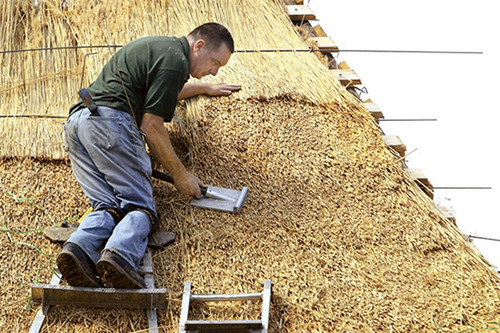
- Conditioning protruding stalks - rather, a decorative stage, depending on your personal preferences. The roof can be perfectly smooth and neat or have a slightly disheveled appearance of "under the antiquity". Specialists recommend leaving the topmost layer of reeds a little loose to increase the protective function of the coating.
- Lastly, the roof should be treated with the anti-view composition to protect against fire.
The roof from the root is a great option for a country house. It lasts not one decade, so the burden of point repair will fall on the shoulders of grandchildren or the next owners. We considered the installation in general terms, and despite the fact that earlier such roofs were built on their own without the use of modern materials and fasteners, this work is quite peculiar and requires certain skills. Therefore, before starting to stack the root on the rafters of a residential building, it makes sense to "practice" on a gazebo or shed.

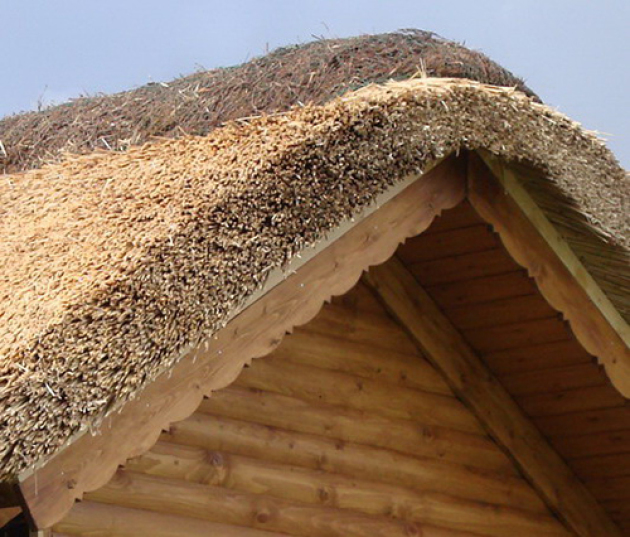
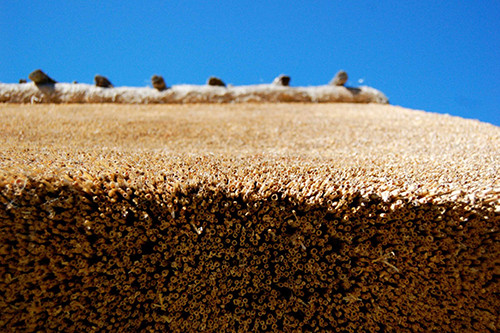
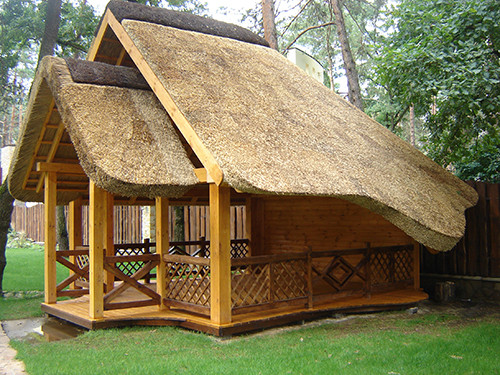
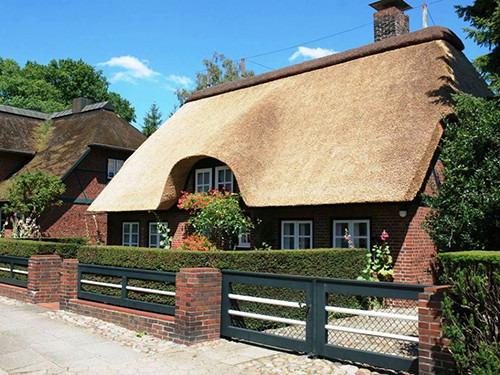
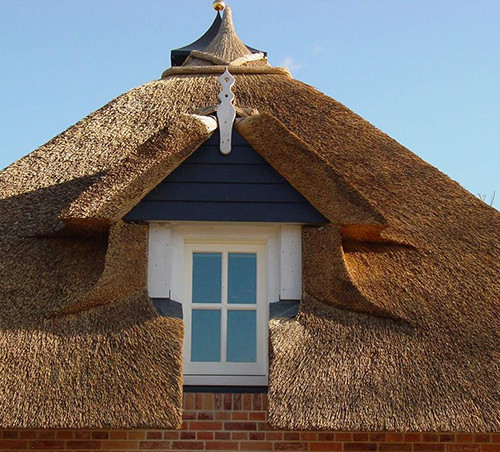
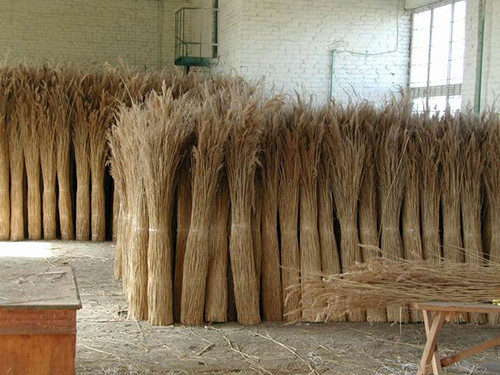
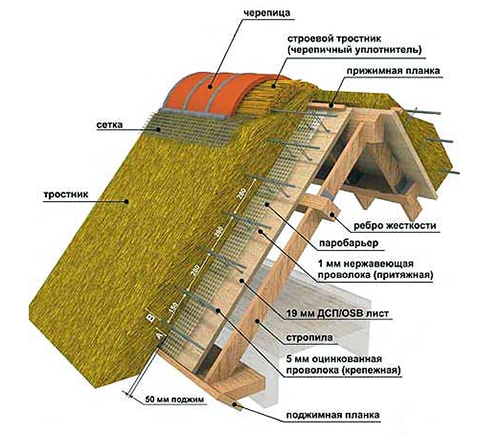
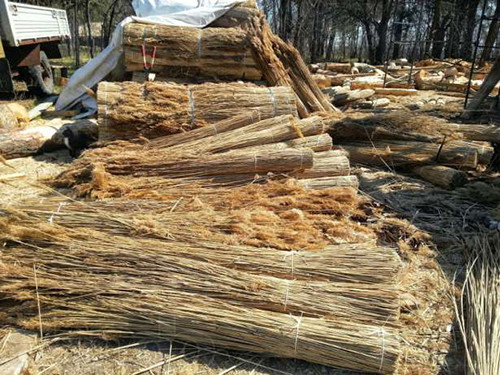
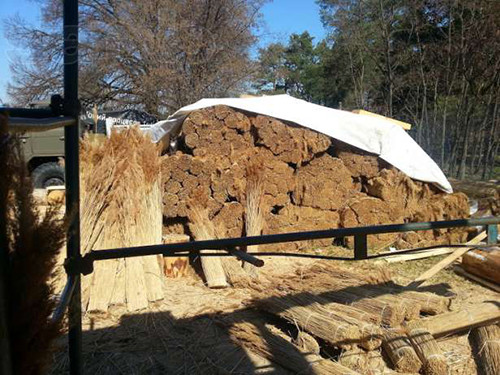
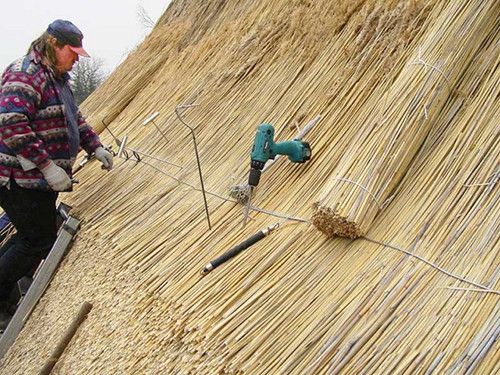
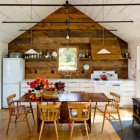
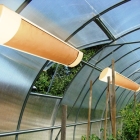
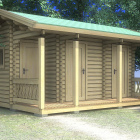
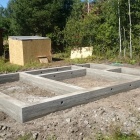
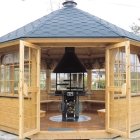
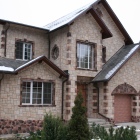
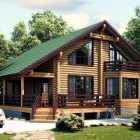
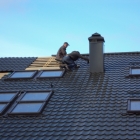
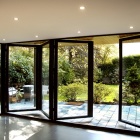
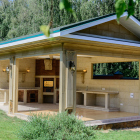
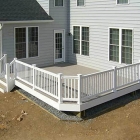
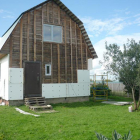
 Start a discussion ...
Start a discussion ...